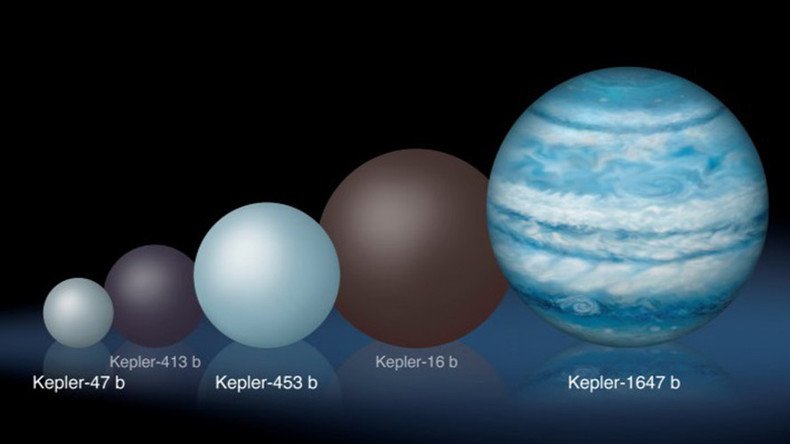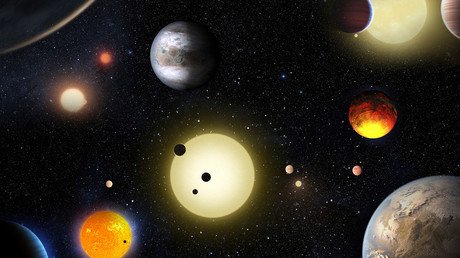Scientists discover largest ever ‘Tatooine’-like planet orbiting around two suns

NASA’s Kepler telescope has spotted a new planet – one where Luke Skywalker might feel right at home. Just like his native Tatooine, the new planet orbits two suns and is the largest “binary planet” ever found, taking the longest trip around its stars.
In the constellation Cygnus, the recently discovered planet orbits what scientists call a double-star system, known as Kepler-1647, from where the new planet takes its name, Kepler-1647b.
The team of scientists from San Diego State University (SDSU) that discovered the planet estimates it is about the size of Jupiter, making it the largest “binary planet” ever found. The so-called transiting circumbinary planets (CBP) “are likely to be less common,” they wrote.
Outside the scientific community, planets like Kepler-1647b have also been called “Tatooine” after Luke Skywalker’s home world in the Star Wars saga.
“It’s a bit curious that this biggest planet took so long to confirm, since it is easier to find big planets than small ones,” said SDSU astronomer Jerome Orosz, a coauthor of the study. “But it is because its orbital period is so long.”
It takes Kepler-1647b over three Earth years, or 1,107 days, to take one full lap around its stars, the longest orbital period of any confirmed “Tatooine” planet.
This newly discovered planet so faint that it is impossible to see with the naked eye. The researchers spotted it using NASA’s Kepler Space Telescope.
Kepler-1647b’s host stars – or the eclipsing binary system - are approximately 4.4 billion years old, roughly the same age as Earth, and are located 3,700 light-years away. One of the stars in that system is slightly larger than the Sun, while the other is smaller.
It was previously thought that circumbinary planets all orbited close to their stars, but Kepler-1647b bilks this pattern, being much further away from its stars than any previously discovered binary planets.
“The observed orbit of Kepler-1647b lends strong support to the models suggesting that CBPs form at large distances from their host binaries,” the team wrote in its paper.
However, we should not expect news of alien life detected on Kepler-1647b. Just like Jupiter, it is a gas giant.
“Habitability aside, Kepler-1647b is important because it is the tip of the iceberg of a theoretically predicted population of large, long-period circumbinary planets,” SDSU astronomer William Welsh said.













